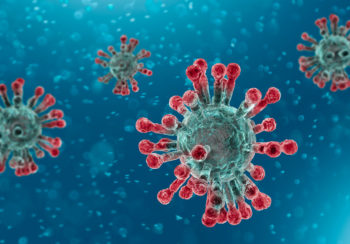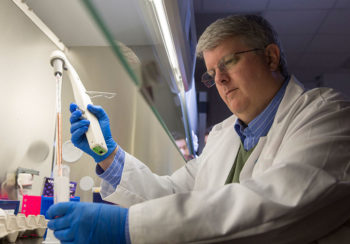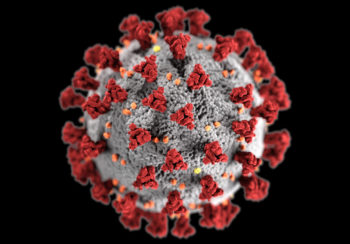As Ebola raged across Africa in 2014, Distinguished Research Professor John Drake and his colleagues at the University of Georgia developed sophisticated mathematical models that helped predict the epidemic’s spread and guided policies designed to save lives.
Six years later, the deadly virus that Drake and his team are battling has hit much closer to home.
“One thing that the COVID-19 pandemic has made clear to people is that viruses don’t respect borders,” says Drake, who directs the Center for the Ecology of Infectious Diseases in the Odum School of Ecology. “A virus that likely originated in bats found in the Hubei Province of China has—within a matter of months—infected more than 1 million people worldwide and caused tens of thousands of deaths.”
Shortly after the virus was identified, Drake convened a team of researchers with broad expertise in data collection, interpretation, disease modeling and more. “The disease is spreading rapidly and globally and is a major threat to public health.”
The university’s Coronavirus Working Group now includes 30 UGA faculty, staff, graduate students and postdoctoral researchers. The COVID-19 Portal they created houses data and maps related to the pandemic and puts COVID-19, the disease caused by the novel coronavirus, into context. In addition to providing information for the public, it serves as a repository of data that is shared with scientists around the globe.
Projects on the site include “nowcasts” that provide estimates of the total number of infections by state, which is no easy task given limited testing capacity and variations in case reporting among and even within states. So-called scenario analyses allow researchers to test ideas about how to contain the outbreak and give policymakers data that helps inform decision making. The models put numbers behind some of the most fundamental questions surrounding the outbreak: How bad can this get? How can we make it better?
One thing is abundantly clear from Drake’s disease transmission models.
“Social distancing saves lives,” he says emphatically. “A single new infection today can result in two or three infections in less than a week, which means that every individual act of social distancing has exponential benefits to your family, your friends and your community.”
For many Americans, the coronavirus pandemic has been a dizzying descent into a reality marked by a combination of isolation and illness. China reported its first death on Jan. 11. The first documented case of person-to-person transmission in the United States was 19 days later. In February, cases in Europe spiked. In March, states began enacting the social distancing measures that have closed schools and shuttered businesses. But the death toll continues to rise.
Drake’s models build upon the lessons he and his colleagues learned from past outbreaks—from Ebola in Africa to West Nile Virus in New York City and white nose syndrome in bats across North America. He points out that ecologists have been creating models to describe ecosystems for decades, examining relationships like predator-prey interactions and shifts in species composition following the introduction invasive species or new diseases. In this case, the new disease happens to be COVID-19.
Drake and his team are collaborating with state officials, the Centers for Disease Control and Prevention, and researchers at institutions around the world. As new data become available, they continue to refine our understanding of how human interventions can impact the course of the pandemic. Ultimately, their work will help guide the safe return of millions of children to schools and the reopening of businesses.
Increasing the frequency of testing to better identify infected people—and then educating and potentially isolating people who have been in contact with them—will be essential. Identifying people who have recovered from the virus and have some degree of immunity as a result could be an additional strategy to pursue.
“Models are tools that allow us to explore ideas, ask questions and get plausible answers,” Drake says. “Some of the most urgent questions today revolve around how we can minimize the devastation caused by COVID-19 and get our society back to a new normal.”

About the Researcher
John Drake
Director, Center for the Ecology of Infectious Diseases
Distinguished Research Professor
Odum School of Ecology





